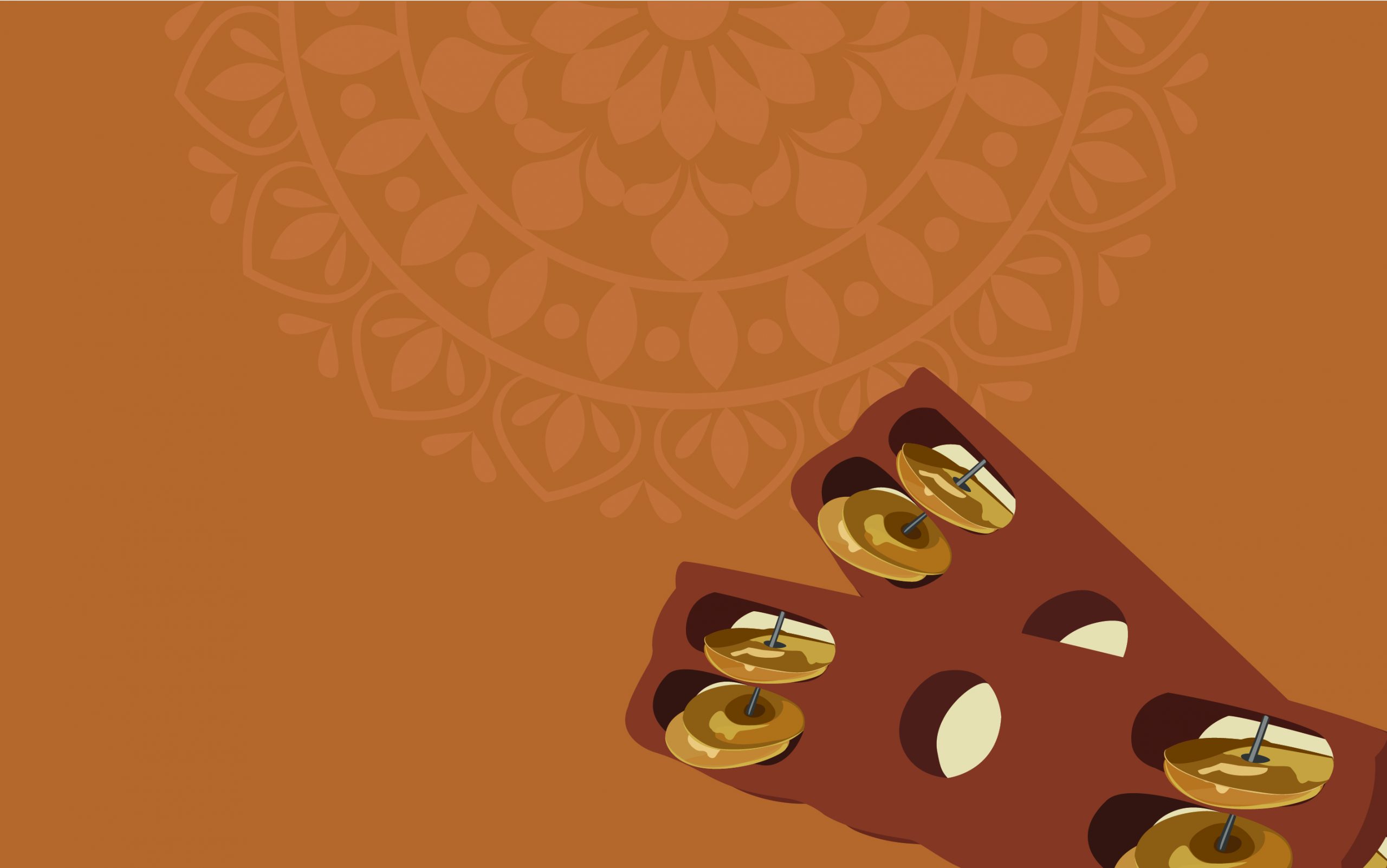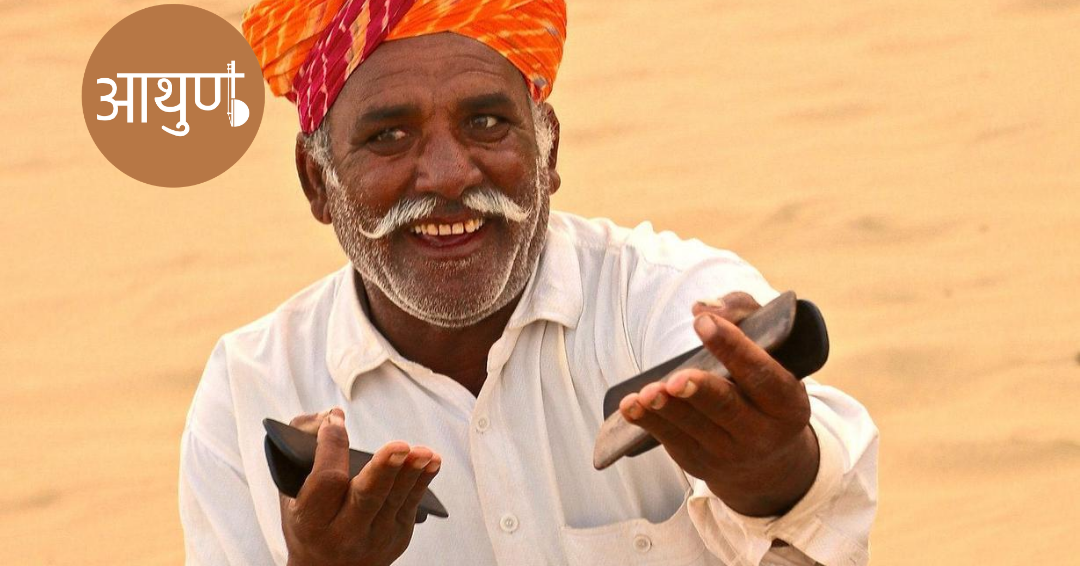


As much Rajasthan is famous for its history and traditions, Rajasthani folk music is equally popular. Also the musical instruments which are used to create the mesmerizing music are unique in their own way. Khartal is one of them.
Khartal is usually played by the Langas and Manganiyaars tribe of Rajasthan. The instrument is a handmade product made only by the khartal players as it’s not just about hitting two wooden pieces to create a tone but to get the required sounding from the blocks. One can hear the sound of Khartal in the backdrop for devotional and folk songs. However, nowadays it is also played as a solo instrument. Khartal can also be seen in many of the pictures of Meera Bai, the most famous devotee of Lord Krishna in the 16th Century. She was born into a Rathore family in Pali, Rajasthan.

Khartal is very ancient as one looks into the figure of Saint Naradh depicted and described in the vedic or puranic texts. He would always be singing with a set of clapping blocks, which are apparently Khartal category. It is considered as a ‘ghanvadya’ used by devotees during devotional dances and songs, or during Musical discourses of divine stories called Harikatha rendering, while most of the parts of India has it as two blocks held in the hand of the player. In Bengal, it is of the form of brass finger cymbals, about three inches or more of length, used during GaudiyaVaishnavaKirtans taking place in this region.
Khartal is a simple form of instrument, made mostly of wood, sometimes of metal. One of them is referred to as ‘male’ and the other ‘female’. The player makes them clap together to raise the rhythmic sound of music, a kind of idiophone of a self-sounding instrument. its parts function as vibrators and resonators.
One part of Khartal is clung to the thumb of the player, mostly the male part, while the other part is stuck to the ring finger of the same hand, the blocks with its jingling metal balls are decorated. When clapped together, they make such a rhythm that goes well with kirtan or bhajan. The correct way of positioning Khartal blocks as interpreted astrologically is as the ring finger representing fire element, associated with Sund and the root chakra, providing sustained strength, power, stamina and assertiveness for the player.